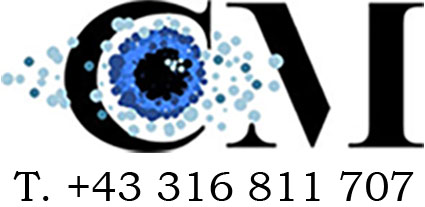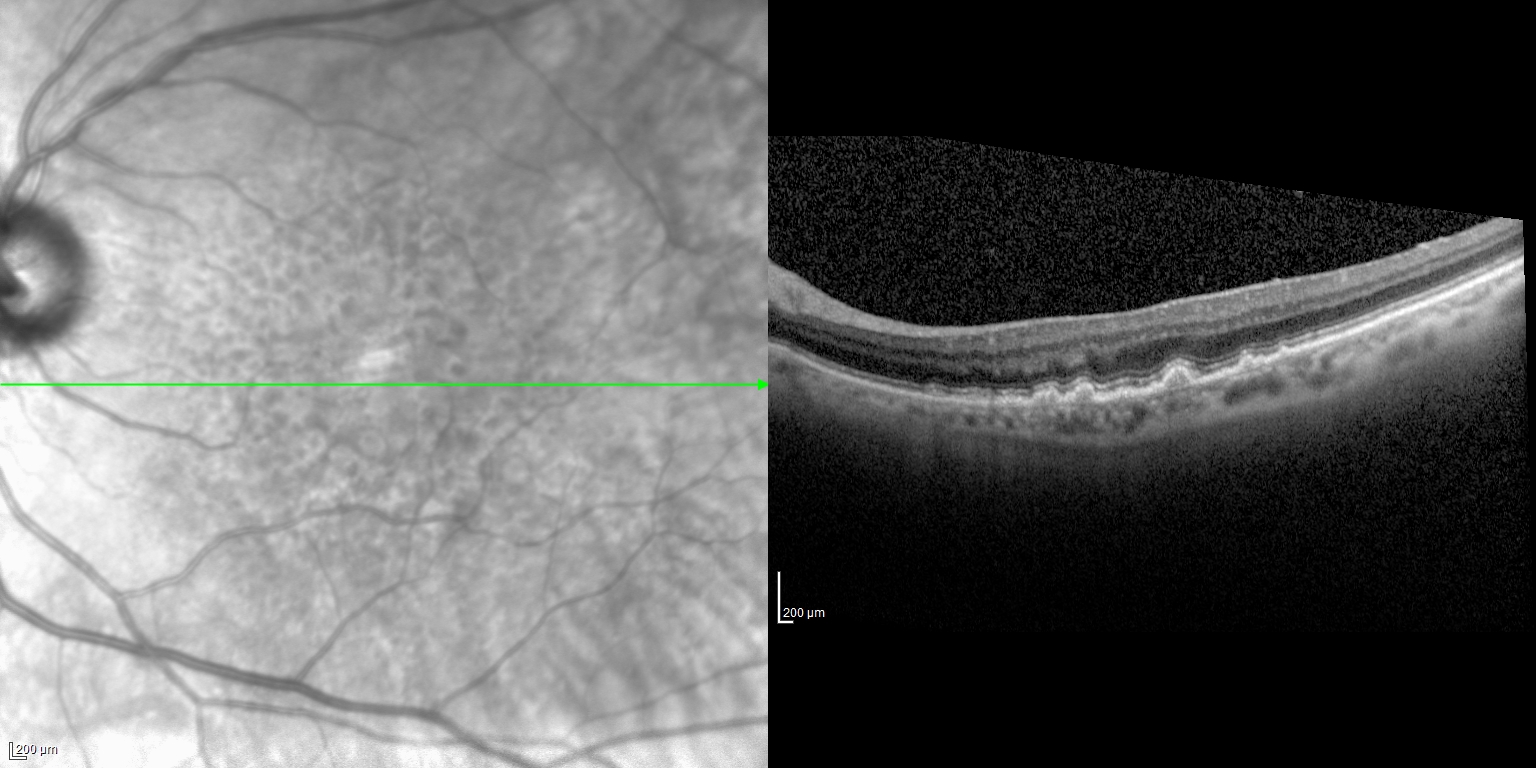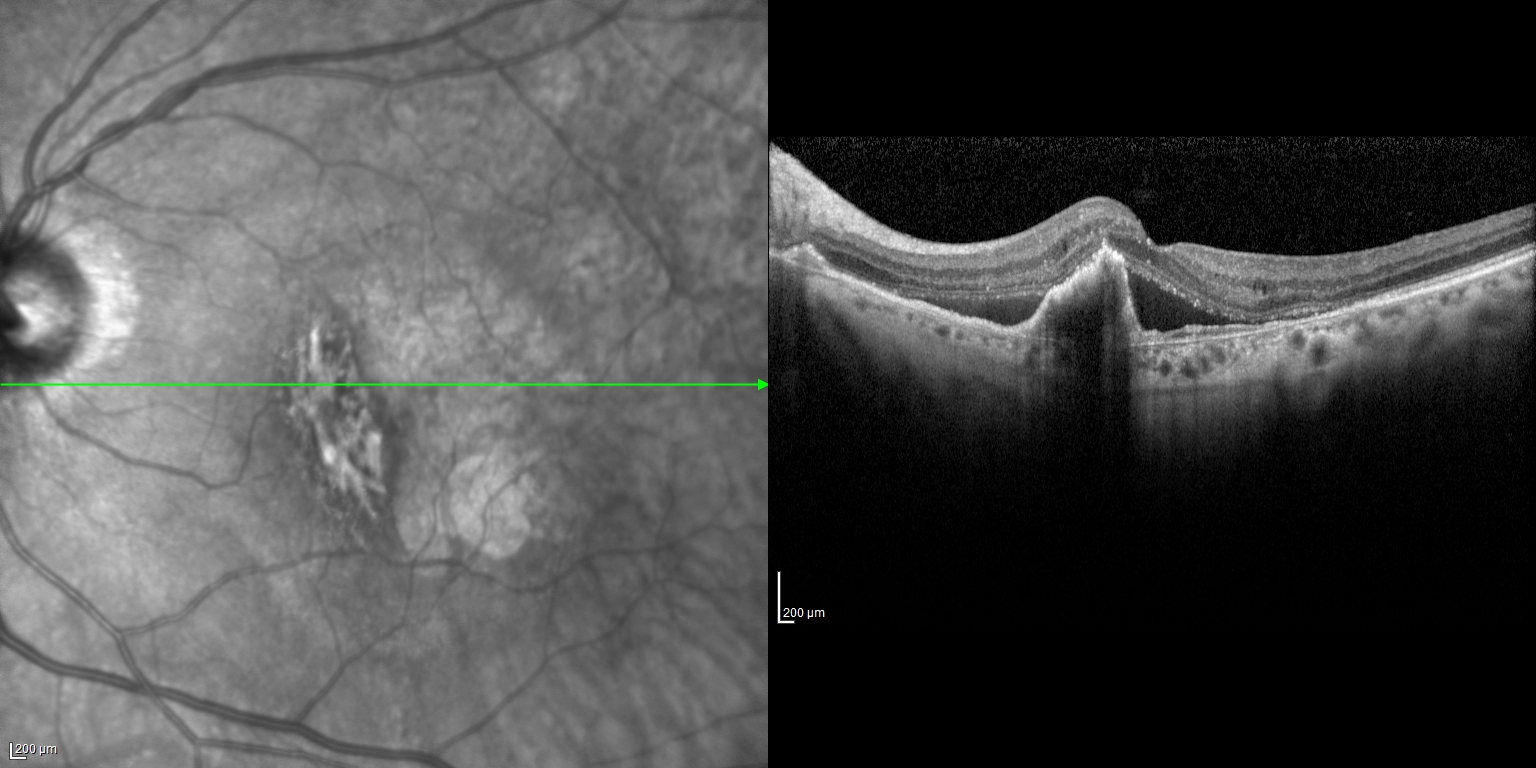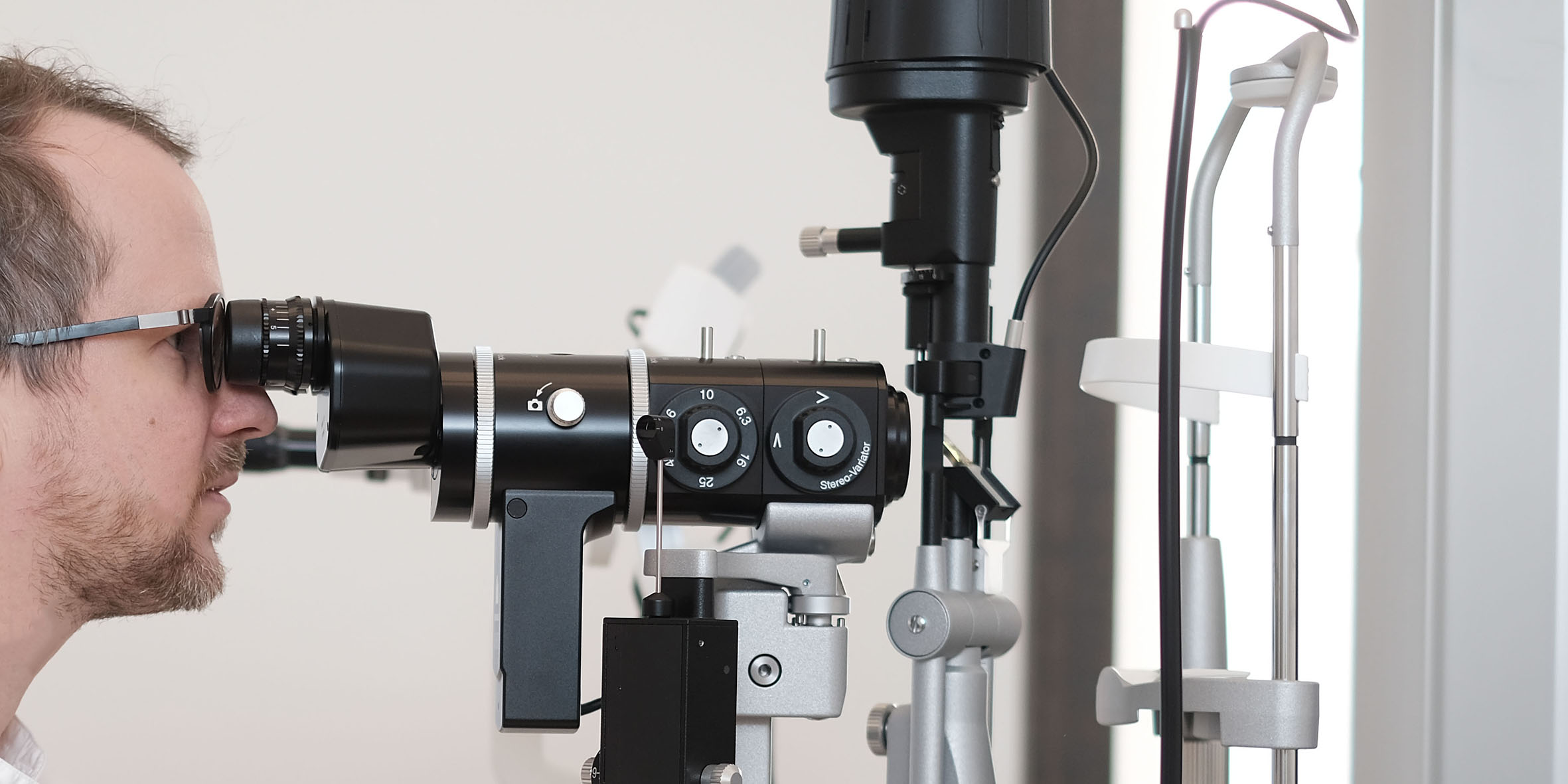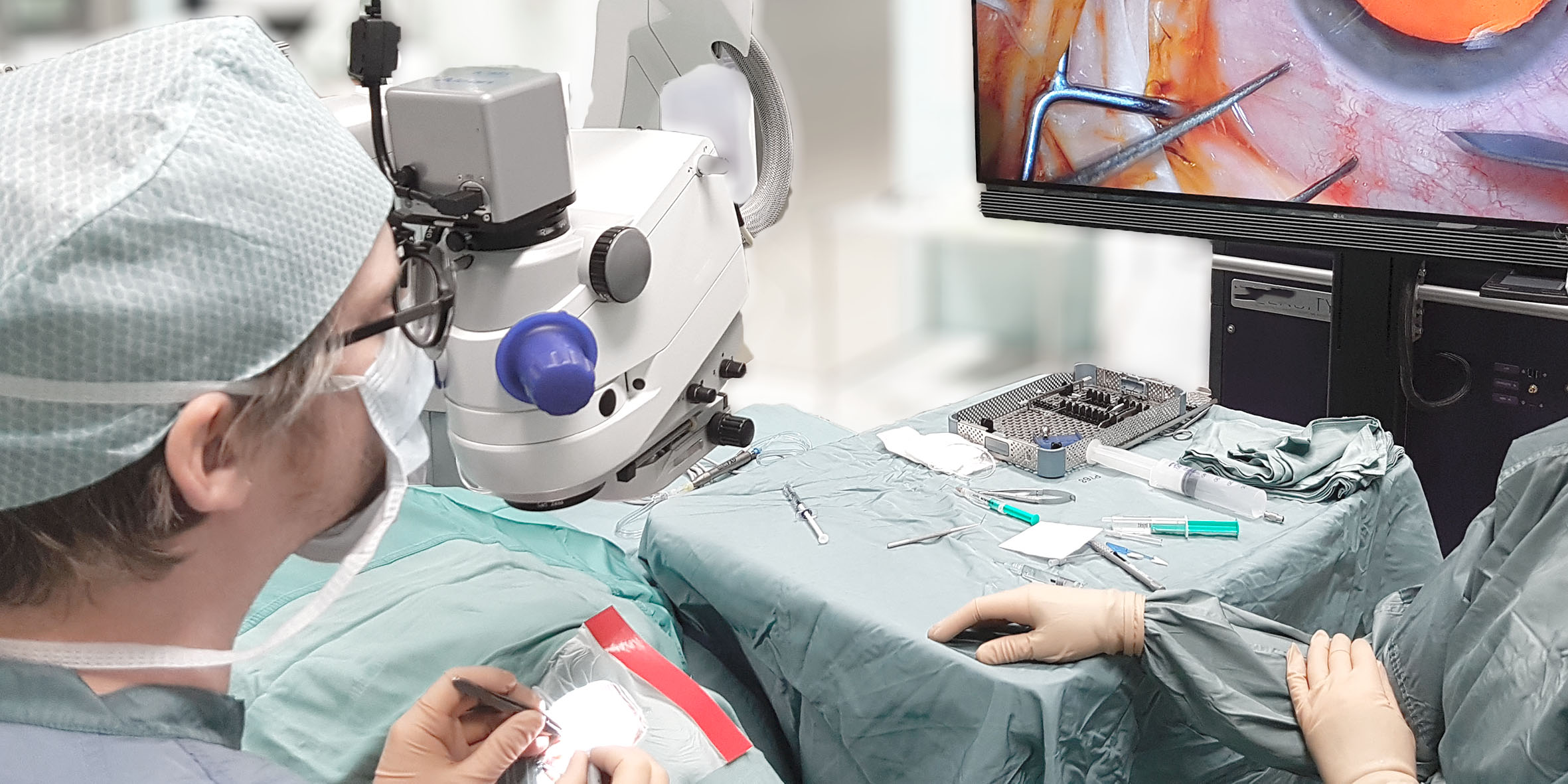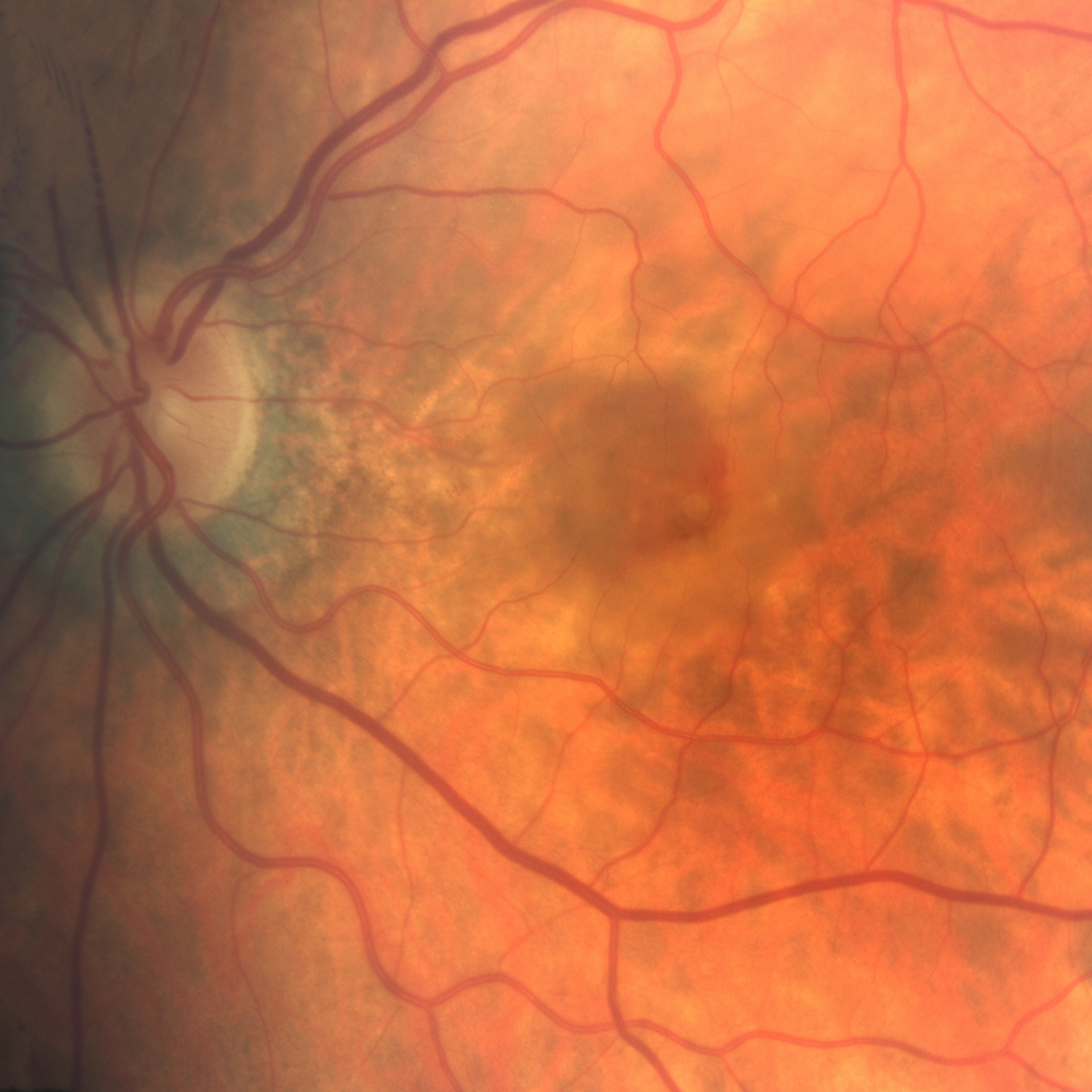
Feuchte Makuladegeneration mit zarter Blutung und Ödem
About 10% of those over 65 years old have some degree of age-related macular degeneration. There are two forms: dry and wet macular degeneration. Normally AMD affects both eyes.
What is the Makula?
The macula is the part of the retina with which we see the most colorful and, above all, the sharpest. It is also called the yellow spot. The macula forms the part of the visual image we are currently looking at or fixing. It is therefore crucial for normal vision.
What symptoms do you notice?
As a patient, one notices that, in particular, central vision becomes duller, reading difficulties occur and colors are less intensively perceived. The age-related macular degeneration does not affect the peripheral, the surrounding visual field. Therefore, there is never a complete blindness.
Dry Maculardegeneration
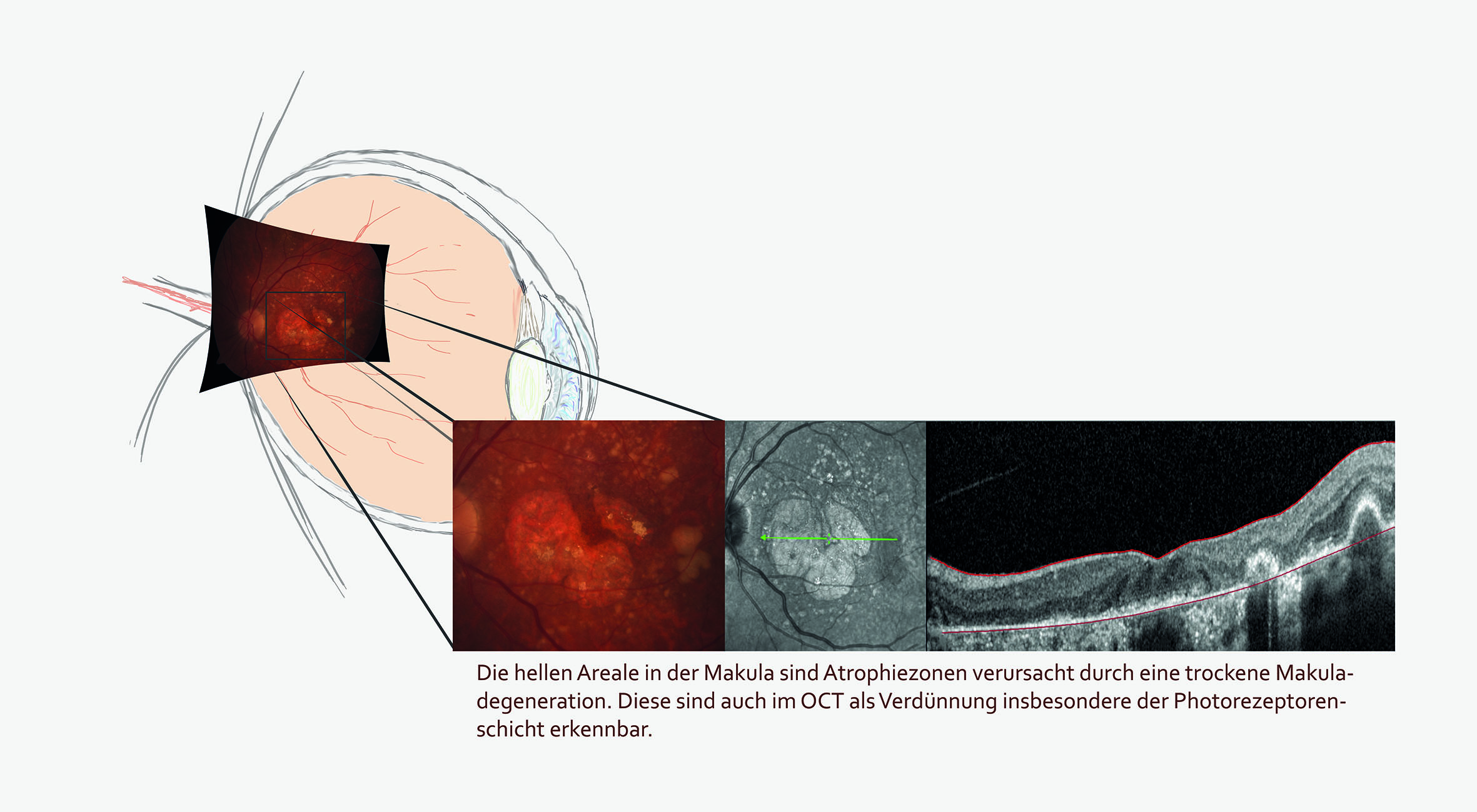
Dry Macular degeneration
In the dry form, the pigment epithelial cells in the macula die off. Deposits form, so-called drusen, which lead to disorders of the visual cells. A slowly progressive loss of central vision over many years is the result. One in ten dry forms changes to the wet form of AMD, which can cause rapid vision loss.
Therapy
There is currently no therapy for the dry form of macular degeneration. Studies show that at an advanced stage, proper nutrition and dietary supplements can have a positive impact on the disease process. In addition, patients with advanced vision can be fitted with visual aids to ensure their reading abilities.
Feuchte Macular degeneration
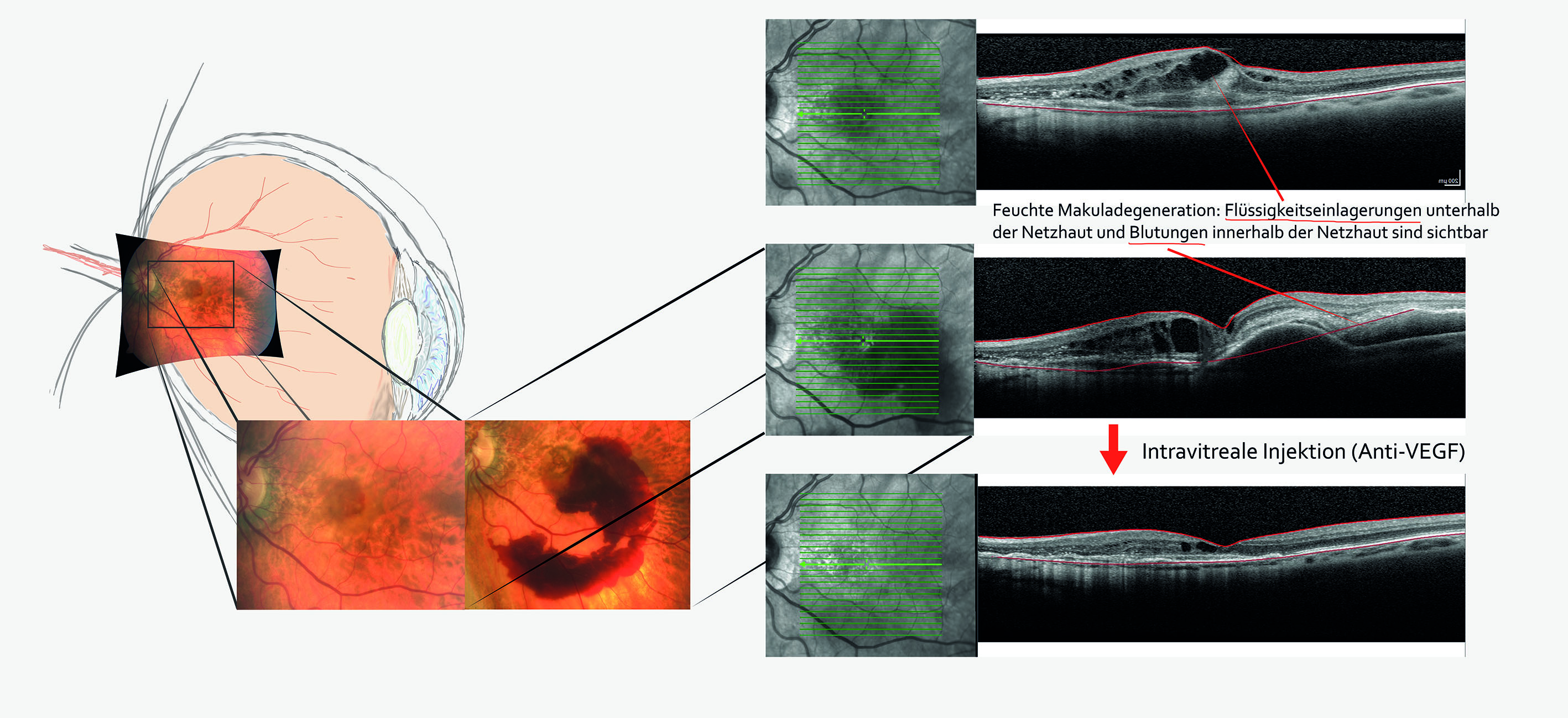
Feuchte Macular degeneration
In wet macular degeneration, abnormal vessels form below the macula. These damage the visual cells of the retina. It can also lead to bleeding below the retina. Wet AMD is more severe than dry AMD. Without therapy, vision loss can occur within days.
Therapy
In contrast to dry AMD, there is a therapy of wet AMD. A drug is injected into the eye (intravitreal injection – IVOM), which prevents the growth or new formation of abnormal vessels, a so-called anti-VEGF. The VEGF (Vascular Endothelial Growth Factor) is a growth substance for vessels in the human body. Anti-VEGF prevents the formation of abnormal vessels. In most cases, regular administration is necessary. In addition to these two forms of AMD there are also juvenile or juvenile forms, which are mostly genetic and can occur from birth or later. Examples are Stargardt’s disaese and Best’s disease.
How can you reduce your risk
-
Healthy diet and healthy lifestyle (sports, weight)
-
No nicotine
